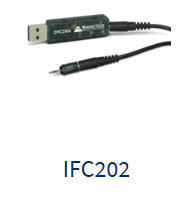
- #Pasteurization unit calculator software#
- #Pasteurization unit calculator Pc#
Tunnel pasteurization uses multiple stages of heating a beverage and its packaging to target temperatures. It can be used for PET bottles, but it can be costly and ineffective at prolonging shelf life. Tunnel pasteurization is commonly used in aluminum can and glass bottle filling. In our three-part series, we define each method and discuss the primary advantages and disadvantages of each.
Aseptic/Extended Shelf Life (ESL) Filling. Newer and increasingly popular methods include: Sometimes used to refer to a PU Monitor.Preservation methods have improved as beverage brands have pushed for new, innovative approaches to insure shelf stability of their product, and increase their competitive edge. Seldom used nowadays, a chart recorder which can be used to assist PU calculation. A plug that emulates a temperature probe at a fixed temperature. Sometimes called Taste Degradation Units. A dummy plug that disables a temperature channel of a multi-channel PU monitor. An alternative to pasteurisation that uses advanced filters to remove microbiological contamination. Used in conjunction with Flash Pasteurisation or Sterile Filtration. Often used in conjunction with a Flash Pasteuriser. The process of filling pre-sterilised bottles in a sterile environment with sterile product. #Pasteurization unit calculator software#
Software produced by Redpost to connect an RPC-80 or RPC-50 to a Redpost PU Monitor. This refers to the monitor unit that travels through the pasteuriser recording the number of PUs accumulated and/or the pressure of the product under test (e.g. Older Redpost monitors with a pressure channel were referred to as RPTs instead of the now standard RPU. #Pasteurization unit calculator Pc#
This is the desktop unit that charges the Redpost monitor and either transfers data to a PC or prints reports directly (e.g. These replace the standard wing-nuts on can fittings to allow faster turnaround when replacing a can. This addition to a PU Monitor frame allows bottle holders and can fittings to be changed much quicker than normal. Useful when calculating your probe lengths. The depth of the recess under the bottom of the bottle. Product stability is achieved when sufficient microorganisms have been killed to guarantee. The liquid inside the package being pasteurised i.e. The American spelling of Pasteurisation. A process of taking a beverage or food stuff to an elevated temperature for a specific period of time in order to kill the majority of microorganisms that would otherwise reduce a product's shelf life. This term was invented by Redpost as there seems to be no industry term used to describe this dimension. The depth of the recess surrounding the ringpull on a can. The product container usually a bottle or can. This refers to the location within the package where the temperature used in calculating PUs is being measured. This can refer to a graph produced by pasteuriser control software that shows the rate of PU accumulation.  A temperature and/or pressure logger, that travels through a pasteuriser and can calculate the PUs of a sample container. This plug was used as a dummy pressure channel plug on RPT-122 units. Of some microorganisms to lower temperatures.
A temperature and/or pressure logger, that travels through a pasteuriser and can calculate the PUs of a sample container. This plug was used as a dummy pressure channel plug on RPT-122 units. Of some microorganisms to lower temperatures.  Some brewers use two PU cutoffs a Non-lethal PU and a Lethal-PU, this is because of the resistance. See our Product pages for more information.
Some brewers use two PU cutoffs a Non-lethal PU and a Lethal-PU, this is because of the resistance. See our Product pages for more information.  A key plug that allows access to the settings of a PU Monitor. The metal 'basket' that protects the PU monitor and package under test during the run through the pasteuriser. Inline pasteurisation using high heat for a short time period. The temperature of the product as it leaves the Tunnel pasteuriser. The depth of the recess under the bottom of the can. At or above this temperature PUs are accumulated. Short for Cutoff temperature and used in PU calculations. This refers to the coldest point in the package and is most often used as the PU pick-up point. It allows a good seal to be formed around the neck of the bottle. The clamp is the metal part of the rubber bottle top. See our Science pages for a detailed explanation. This is a parameter used in PU calculation. A B C D E F G H I J K L M N O P Q R S T U V W X Y Z
A key plug that allows access to the settings of a PU Monitor. The metal 'basket' that protects the PU monitor and package under test during the run through the pasteuriser. Inline pasteurisation using high heat for a short time period. The temperature of the product as it leaves the Tunnel pasteuriser. The depth of the recess under the bottom of the can. At or above this temperature PUs are accumulated. Short for Cutoff temperature and used in PU calculations. This refers to the coldest point in the package and is most often used as the PU pick-up point. It allows a good seal to be formed around the neck of the bottle. The clamp is the metal part of the rubber bottle top. See our Science pages for a detailed explanation. This is a parameter used in PU calculation. A B C D E F G H I J K L M N O P Q R S T U V W X Y Z







 0 kommentar(er)
0 kommentar(er)
